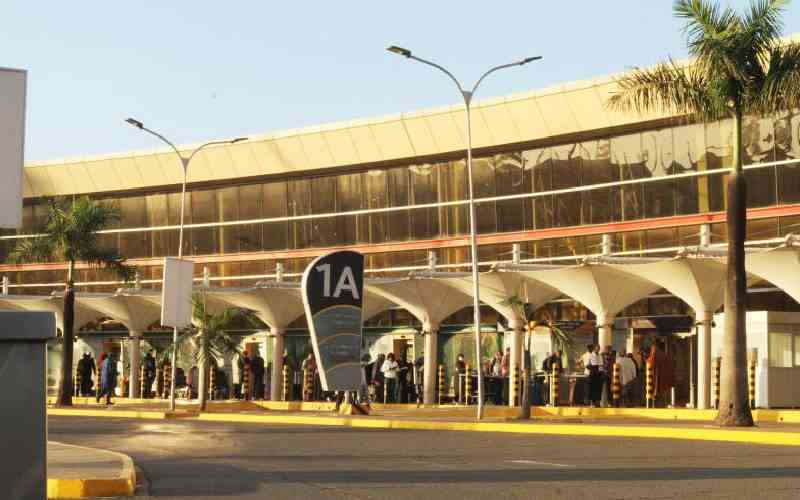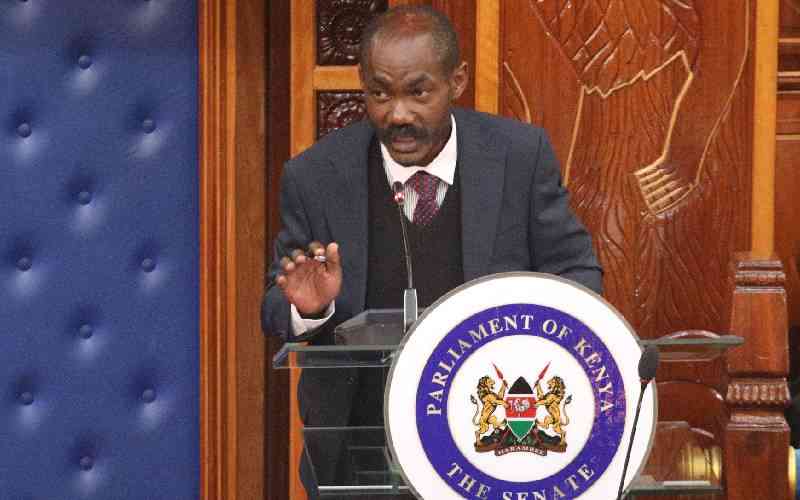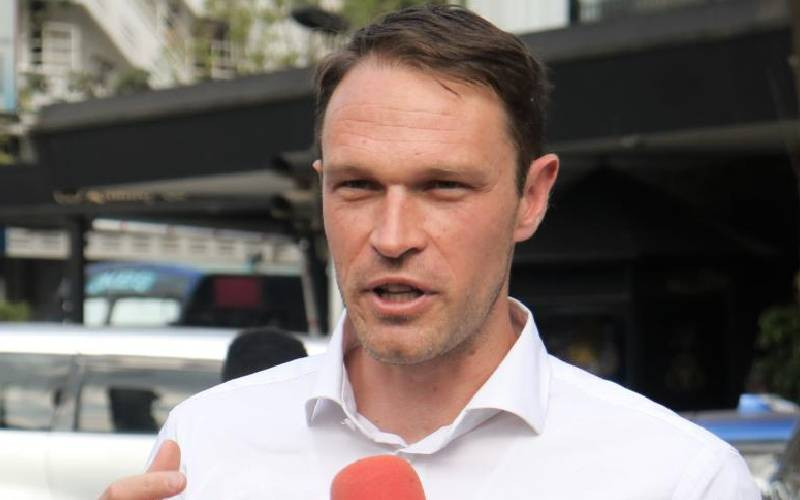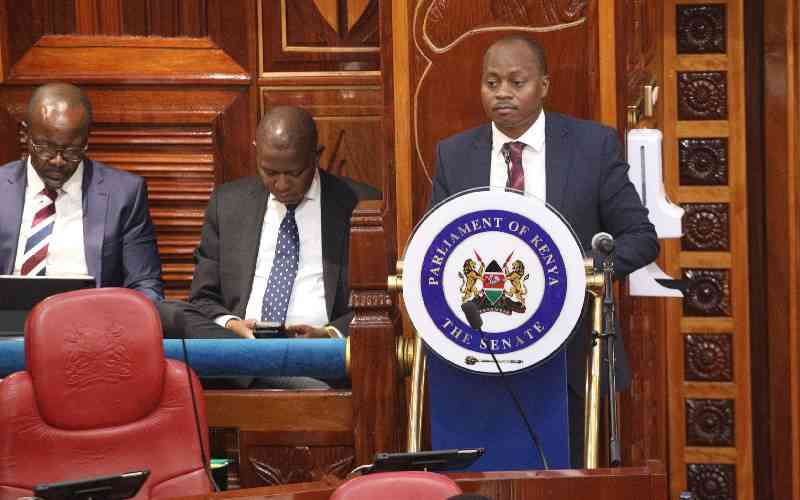By Mwaura Samora
“Santo Subito”—make him a saint right now — thousands of mourners chanted at the St Peter’s Square during the late Pope John Paul II’s funeral in April 2005. Similar sentiments were echoed by millions of Catholics around the globe.
That prayer will be answered in the second Sunday of Easter this year when the long serving Vicar of Christ will be made a saint alongside Pope John XXIII, according to a decree by Pope Francis in 2013. While around a million pilgrims squeezed in St Peter’s Square during John Paul II’s beatification—being entered into the lists of potential saints—more is expected to fill the historic square on April 27.
Born in Krakow Poland 91 years ago, Karol Josef Wojtyla has been hailed as one of the forces behind the fall of communism in his motherland and the rest of Europe and lifting the Catholic church’s relations with other religions to an all-time high.
He prayed at the Western Wall in Jerusalem, the Jewish holiest site, and became the first pope in history to visit a synagogue. Karol Wojtyla was also the first non-Italian pope since the election of Dutchman Adrian VI 455 years ago.
Among the issues the late pope took a strong stand against include abortion, birth control, use of condoms to prevent Aids, homosexuality, divorce, ordination of women and America’s attack on Iraq.
He is also said to have been fluent in 13 languages, travelled to more than 125 countries before his death, beatified 1,340 people and canonised 483 saints—more than a combined tally of his predecessors in the last five centuries.
With such a phenomenal record under his belt it was no surprise that many argued for a hurry of the canonisation process before it happened three years ago. Ironically, his beatification ceremony fell on May Day in 2011; a date marked by socialists whose ideology the late Holy See is said to have greatly abhorred.
Beatification is a critical step towards sainthood since it elevates the benefactor to the highest echelons of holiness in the Roman Catholic order, after the verification of at least two miracles to their credit.
MIRACLE
The “miracle” that led to Karol Wojtyla’s beatification is said to have happened when a nun ailing from Parkinson’s disease claimed to have been cured after the late pope’s intercession. Church officials and church-appointed doctors have insisted that John Paul II, who suffered from the same medical condition, “cured” Marie Simon-Pierre.
But skeptics believe otherwise.
A report published in a polish newspaper claimed that a doctor who scrutinised the nun’s case concluded that she might not have been suffering from Parkinson’s, but from a nervous disorder from which temporary recovery is medically possible.
Miss Simon-Pierre was among the key speakers during the beatification ceremony in Rome in 2011. Due to this appeal, John Paul II’s path to sainthood was fast-tracked by waiving the mandatory five-year waiting period after the death of the candidate that it takes before the official process could start.
According to the National Catholic Reporter, an independent US weekly, this apparent haste to push the process through is likely to evoke criticisms from many quarters.
Stay informed. Subscribe to our newsletter
“The overly conservative have suggested that his cause is being fast tracked in order to score points in internal Catholic debates,” the US newspaper claimed just before the beatification process, adding that the haste “risks cheapening the canonisation process if there is a perception that it has been short circuited” to favour an individual.
The paper also noted that “some victims of clerical sexual abuse and their advocates believe that beatifying him now could give offence to victims who associate the late pope with a mixed response to the crisis.”
infallibly
Beatification, which installs the title “Blessed” upon the beatified, implies the candidate led an infallibly holy life and is now in heaven and can intercede in the prayers for others. To mark this important step, the late pontiff’s sarcophagus was moved from the grottos, the labyrinth of papal tombs under St Peter’s Square, and placed inside the St Peter’s Basilica.
Although his intelligent use of the media and ability to connect with the masses endeared him to millions around the globe as confirmed by the unprecedented outpouring of grief after his death, John Paul II’s reign was never short of critics.
In his book The Power and The Glory, David Yallop quashes many achievements that popular history has attributed to the late Pope under a chapter peculiarly titled “The dark heart of John Paul II’s Vatican.” The British writer claims that his allegations are based on evidence accessed from the Vatican, the Central Intelligence Agency, KGB and the Polish Secret Service.
“When the beatification process involves a figure as controversial as the late pope, a rigorous investigation which lays open every facet of Karol Wojtyla’s entire life is paramount,” Yallop says. “Demonstrably the current rush to sainthood does not envisage exhaustive inquiry.”
In many chapters of the book, the agnostic author goes to great detail to demonstrate how the Vatican, and consequently the Church, “hobnobbed” with despots and dictators in Europe, Africa and Latin America during the Pole’s tenure.
Among the autocratic regimes who opened their doors for a papal visit during John Paul II’s 27-year reign are Cuba, El Salvador, Philippines, Nicaragua, Argentina, Panama, Togo and Zaire (now the Democratic Republic of Congo) where he embraced and rubbed shoulders with despots like Mobutu Sese Seko wa Zabanga, Ferdinand Marcos, Omar Bongo and Manuel Noriega.
On the belief that the “Media Pope” played a significant role in the downfall of the Soviet Union and communism, Yallop holds a view radically different from what is common in the pages of popular history.
“He has been portrayed by the Vatican, by numerous journalists and countless biographers as a man who stood resolute against the Communists and fought them tooth and nail in the years leading to his papacy,” the controversial scribe notes. “But facts reveal a man who successfully survived the Polish communists as he had survived the Second World War, namely by prudence and a complete absence of any heroics.”
REPRESSIVE REGIMES
The book traces the soon-to-be Catholic saint from his village of birth in Poland to his death in the papal bedroom at the Apostolic Palace, “exposing” and explaining events so implicating that in its review the British newspaper Herald prophesised that “Yallop may go to hell for this”
But Dr Fr Dominic Wamugunda, the dean of students at the University of Nairobi, says Pope John Paul II cannot be blamed for visiting dictatorship regimes.
“He was going there as a leader of the body of the Church in those countries, most of whom needed the papal comforting to bear with repressive regimes,” he says. “The fact that he didn’t condemn these brutal dictators was a diplomatic tact since the pope is also a head of state. It is the work of citizens and not the people to fight dictatorship.”
Dr Wamugunda also says that the long-reigning pope demystified the papacy by travelling to many countries and overseeing radical changes.
While John Paul II served the second longest documented papal tenure in history, his predecessor Albino Luciani-Pope John Paul I reigned the shortest. He held office for 33 days before dying under what several authors and journalists have termed “mysterious circumstances” on August 6, 1978.
“It was rumoured he was deliberately elected by cardinals keeping secrets that he was too weak to bother and his health would cause him to die prematurely in office,” Gregory Christiano, an American author and historian, writes in an article entitled The Mysterious Death of Pope John Paul I (A Treatise). “To the surprise and consternation of those very cardinals, Pope John Paul I immediately investigated the Vatican Bank and wanted to clean the house of any prominent prelates who were Freemasons.”
This theory is also backed by Yallop who claims that at the time of his death John Paul I was on the verge of implementing some radical changes, a fact he says did not augur well with some in the Vatican corridors of power.
“One month after his election, Albino Luciani received an extensive and very detailed interim report that had been carried out on his request,” Yallop writes adding that “he reached a number of decisions which were certain to have a dramatic effect on the Church.”
The new pope never lived to implement the “number of decisions” because he was found dead in his bedroom a few days later.
Christiano also claims that enemies of the “Smiling Pope”, as John Paul I was popularly referred by the media, might have been multiplied by his liberal approach towards the use of birth control pills and acknowledging children born by in-vitro fertilisation.
Although his reign was criticised by some, John Paul II’s road to beatification and sainthood has been swift and smooth. Those that might have wanted to object or stall the process never got the opportunity or the platform since the late pontiff, either by coincidence or an act of providence, abolished promotor fidei—the “devil’s advocate”.
DEVIL’S ADVOCATE
As the fifth step towards beatification the “devil’s advocate” was an individual whose duty was “to point out any flaw or weak points in the evidence adduced, and raised all kind of objections.”
Unlike Karol Wojtyla’s apparently easy promotion to holiness, the proposal to canonise Pope Pius XII, the man who occupied the throne of St Peter during the World War II, has been riddled with controversies emanating from his purported indifference to the suffering of Jews during the Holocaust.
Documentary evidence quoted by Jewish historians and authors indicates that although the Pope was constantly besieged with pleas to help millions of Jews escape Nazi-occupied Europe, he did “very little” in a bid to ensure the Church remained “neutral” during the war.
The International Catholic-Jewish Historical Commission (ICJHC) comprising three Jewish and three Catholic scholars was established by the Holy See’s Commission for Relations with the Jews in 1999 to establish the role of Vatican during the World War II.
In October 2000, the group of scholars concluded their findings and came up with a report titled The Vatican and the Holocaust which refuted many explanations that have been put forth by defenders of Pope Pius XII.
INACCURATE
“The often-espoused view that the pontiff was unaware of the seriousness of the situation of European Jewry during the war was definitely found to be inaccurate,” writes jewishvirtuallibrary.org, a respected online library documenting Jewish issues.
“Numerous documents demonstrated that the pope was well-informed about the full extent of the Nazi’s anti-Semitic practices.”
Although Benedict XVI, who abdicated in February 2013, recognised Pious XII’s “heroic virtues” and declared him “vulnerable” in 2009 alongside John Paul II, he decided to “shelve” the controversial pontiff’s path to sainthood until archives from his wartime papacy are opened to independent researchers in 2014.
Being declared “vulnerable” is an important step to sainthood since this implies that the person is admired and recognised as a model of Christian virtues by the Holy See. The next step after “vulnerable” will be for Vatican to identify one scientifically inexplicable miracle interceded by the “Pope of Mary” after which beatification will be initiated.
He will then be declared a saint after the identification of a second miracle.
The Business Week, an American magazine which compared the urgency displayed by the Church to canonise Pius XII to the speed with which the Norwegian Nobel Committee awarded the 2009 Nobel Peace Prize to the US President Barack Obama, minced no words in its observation.
“So what is the rush? The answer is politics…which does not make for an edifying religious spectacle,” the magazine says. “The common perception, disputed by the Vatican is that by pairing Pius XII with John Paul II in the December 20 decree, Benedict had hoped to satisfy both the conservative and the liberal wings of the Catholic Church.”
The relevance of the papacy in modern times has been questioned by some liberal members of the church with Americans being classified as some of the most skeptical Catholics in the world.
According to a report in Newsweek, a survey conducted by Catholic University sociologist William D’Antonio and his colleagues, 58 per cent of American Catholics say they can practice their faith and disregard the church’s teachings on abortion while 78 per cent say they can disregard birth control.
Pope Francis, the first from the Southern Hemisphere and the Americas, still has a lot to do since the Church is currently contending with the decline in the priesthood and church attendance in Western countries, inroads made by evangelicals and Pentecostals in Latin America and Africa and the debate over decentralisation of power to local parishes.
But many believe his liberal style of leadership will go very far in boosting the image of the Catholic Church worldwide.
 The Standard Group Plc is a
multi-media organization with investments in media platforms spanning newspaper
print operations, television, radio broadcasting, digital and online services. The
Standard Group is recognized as a leading multi-media house in Kenya with a key
influence in matters of national and international interest.
The Standard Group Plc is a
multi-media organization with investments in media platforms spanning newspaper
print operations, television, radio broadcasting, digital and online services. The
Standard Group is recognized as a leading multi-media house in Kenya with a key
influence in matters of national and international interest.
 The Standard Group Plc is a
multi-media organization with investments in media platforms spanning newspaper
print operations, television, radio broadcasting, digital and online services. The
Standard Group is recognized as a leading multi-media house in Kenya with a key
influence in matters of national and international interest.
The Standard Group Plc is a
multi-media organization with investments in media platforms spanning newspaper
print operations, television, radio broadcasting, digital and online services. The
Standard Group is recognized as a leading multi-media house in Kenya with a key
influence in matters of national and international interest.





